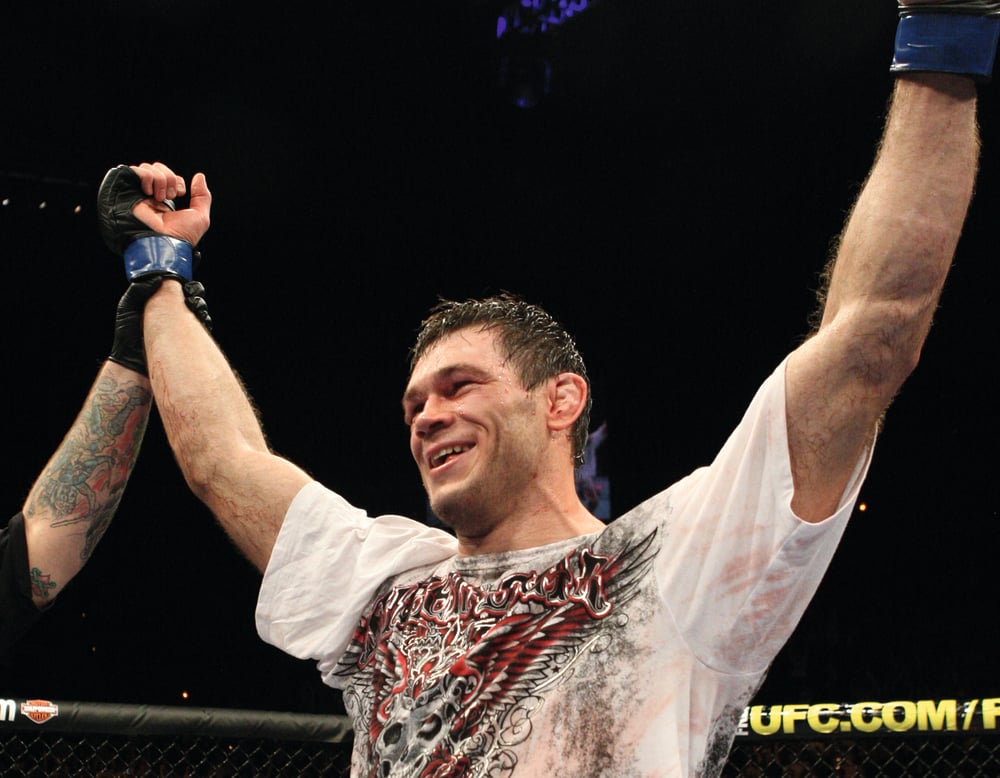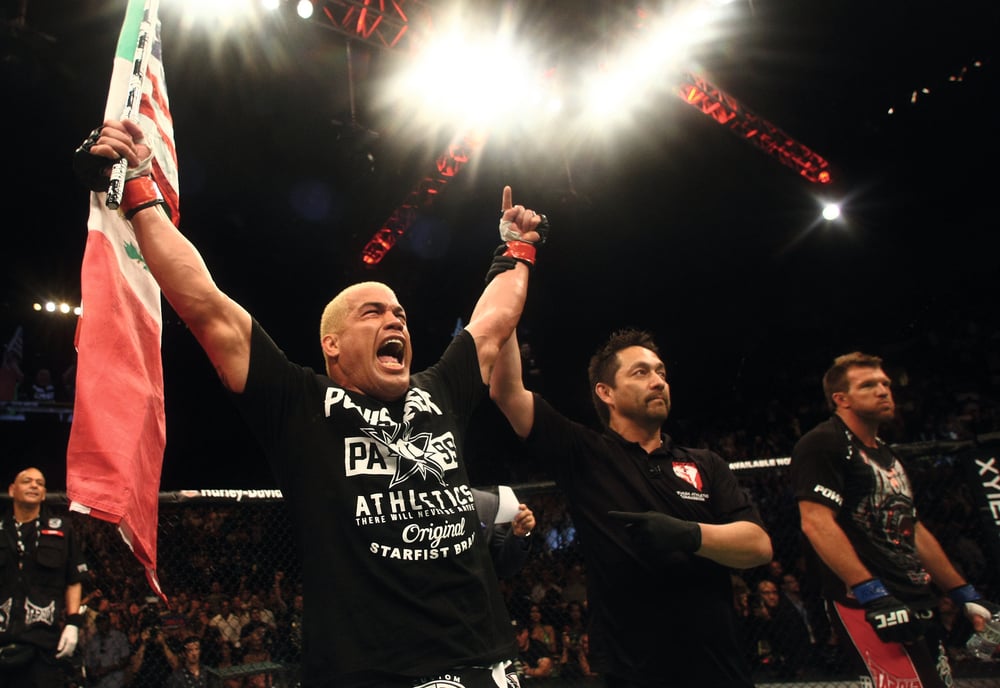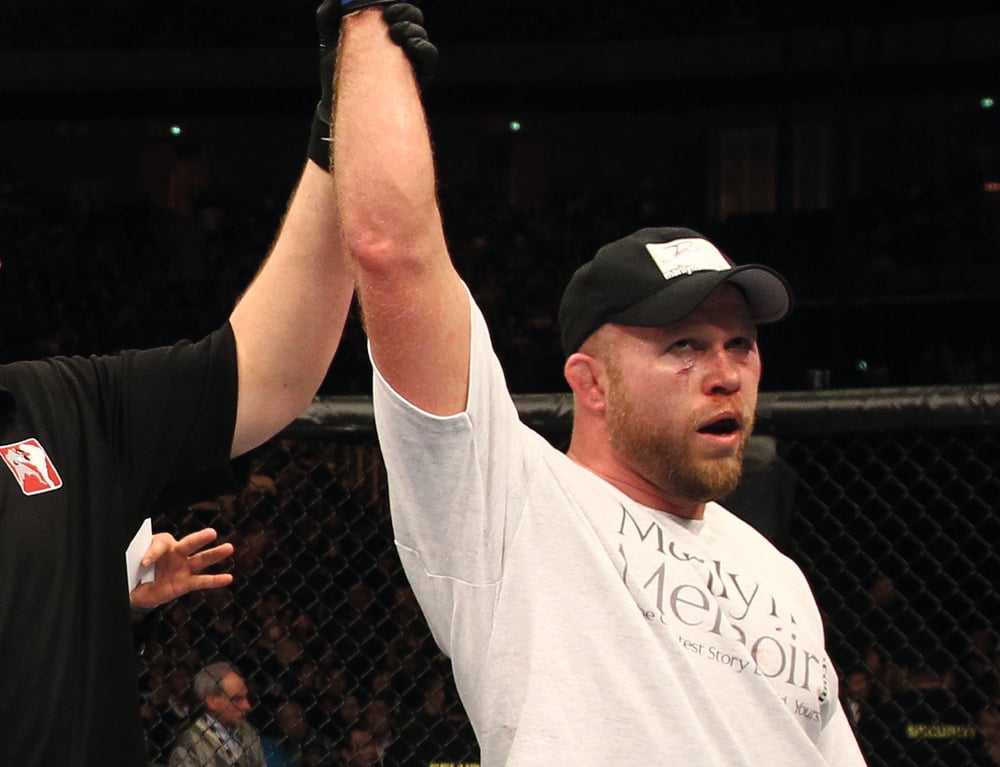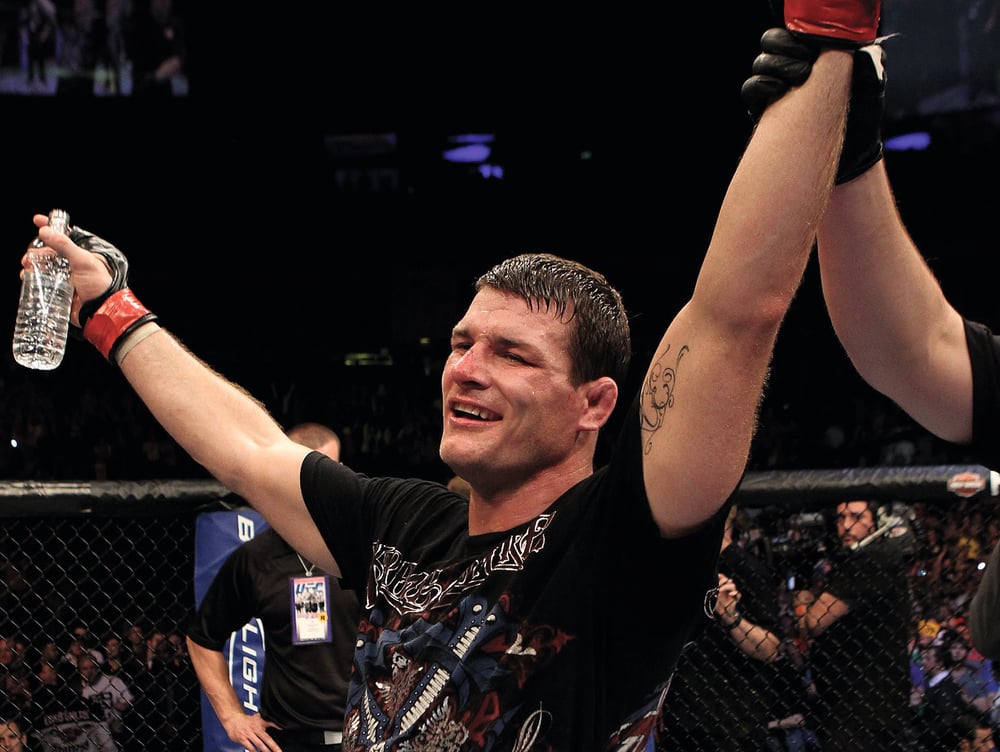
Issue 090
July 2012
FO’s experts and statisticians analyze three upcoming bouts,
DOMINICK CRUZ (19-1-0) VS. URIJAH FABER (26-5-0)
UFC 148, July 7th, Las Vegas
3-1
Cruz is 3-1 against members of Urijah Faber’s Team Alpha Male, owning two WEC victories over Joseph Benavidez and a WEC loss and a UFC win over Faber.
63%
Of Cruz’s 19 career wins, 63% have gone to the judges – his only loss being a submission to Urijah Faber in 2007.
69
With a 69-inch reach, Urijah Faber will have a one-inch advantage over Dominick Cruz, despite being two inches shorter.
8-4
Since defeating Cruz by guillotine in 2007, Faber has gone 8-4 between the UFC and WEC.
First, FO analyst Andrew Garvey takes a look at the state of play: what are the career implications for the combatants? Where are they coming from, and what will victory or defeat hold? Next, our technical advisor Pete Irving breaks down the athletic considerations.
THE BIGGER PICTURE
Previously viewed by many as an arrogant, unlikeable caricature of a cocky fighter, UFC bantamweight champion Dominick Cruz’s increased television time as part of his coaching on The Ultimate Fighter: Live has revealed a serious-minded, insightful, and very human coach. He’s also one of the best fighters in the world at any weight. With a 19-1 record and unbeaten since moving down to bantamweight after his 98-second submission defeat to Faber back in March 2007, Cruz has rattled off 10 straight very convincing wins. Only Faber (in their 2011 rematch) and his diminutive teammate Joseph Benavidez in a pair of WEC fights in 2009 and 2010 have given Cruz anything approaching any serious trouble. Tall, strong, with great reach, exceptional movement and speed, not to mention impeccable conditioning, Cruz is a very talented wrestler and a genuinely ever-improving striker. It will take an exceptional fighter to prise the championship belt from his grasp.
Most impressively, today he’s a much, much better fighter than he was even in 2010 when he stopped Brian Bowles to win the WEC 135lb title. Since then he’s gone 4-0, twice defending the WEC belt, before it was transformed into the UFC title, which he’s also defended twice – with every fight going the full five rounds. Sometimes frustratingly elusive and unwilling to engage in anything but the stick-and-move tactics that have served him so well, he doesn’t often have crowd-pleasing fights. The second Faber fight was the exception. Able to repeatedly negate Faber’s takedowns, and shrug off three knockdowns, Cruz was just too elusive, too busy, too accurate, and too good, picking up his third decision in a row.
Urijah Faber (26-5), the most popular fighter in his division (both at 145 and now at 135) will be 33 by fight time and, in his bantamweight submission wins over Takeya Mizugaki and, most recently, Brian Bowles, put in two of the best performances of an already highlight-filled career. An energetic cardio-machine with creative, effective wrestling and good submissions, the charismatic Faber is the only genuine superstar to emerge from the WEC. The promotion’s former, and longest-reigning featherweight champion gets plenty of title opportunities because he’s both very marketable and remains an elite fighter. Though he’s probably not elite enough to beat the bigger, younger, faster Cruz. Even if he doesn’t, and this is his last title opportunity (traditionally smaller fighters burn out faster), expect another superb fight that goes all five continually fascinating rounds.
TECHNICAL BREAKDOWN
Cruz’s wild style is entirely unique. The way he walks through his stance, lurching from side to side with wide-open swings, the man’s style simply wouldn’t work for 99% of fighters. Most would get themselves knocked out with such a wide-open punching style, or taken down by committing their balance heavily from one leg to the other or slipping back away from kicks and punches like Cruz does. He breaks all the rules: narrowing and broadening his stance so that he’s either too upright or leaning over to one side, leading with the right cross, dropping his left hand as he punches and throwing his head in with the shot. When he shoots doubles he level changes from the waist, when he slips punches he leans at the waist.
Cruz’s reactions, though, are so keen that those characteristics that would be considered gross errors in the fundamentals of most fighters, are advantages to him – allowing him to create openings and evade strikes and takedowns. This inimitability is a different kind of trump card too; finding someone capable of accurately mimicking him in sparring is nigh on impossible.
In 10 appearances between the WEC and UFC, Dominick Cruz has thrown an astonishing 1,844 strikes
Faber, of course, has fought him already, not once, but twice – the second time racking up 25 minutes of experience facing his tricks and habits, at UFC 132. Faber, although orthodox by comparison, is certainly not without his own unique traits and individual flair. His scrambling is second to none, never accepting the takedown and working relentlessly on the neck. His line in guillotines is unsurpassed. Arm in, arm out, guard closed, hooks out; whatever the position Faber seems capable of cranking on a choke. Of his 26 wins, 14 have come via submission, two of those thanks to strikes, the rest from the guillotine or rear naked choke – the former giving him victory in the first clash with Cruz. Even though Cruz scored the takedown, Faber secured his neck. And in spite of Cruz’s improvements, the same outcome is not out of the question here; he still often leads into shot attempts with his head.
Although he was out pointed by Cruz at UFC 132, Faber was adamant he’d done enough to take the win, but clearly must do more to secure victory this time. The fight hinges on Faber’s ability to better predict or limit Cruz’s erratic movement. Faber will not be able to sit back and let Cruz control the pace and distance at any point.
FORREST GRIFFIN (18-7-0) VS. TITO ORTIZ (16-10-1)
UFC 148, July 7th, Las Vegas
37%*
Historically, Forrest Griffin has a strike success rate of 37%, having landed 711 of 1,926 attempts in his last 17 bouts.
1,435
Combined, Tito Ortiz and Forrest Griffin held the UFC light heavyweight title for 1,435 days, 175 of which belong to Griffin.
48%*
Of Tito Ortiz’s total strikes landed in the Octagon, a massive 48% have occurred on the ground.
3
In both of the pair’s prior two bouts, Ortiz successfully completed three takedowns, helping see him to victory in their first bout, but not their second.
THE BIGGER PICTURE
He may only have won one fight since his October 2006 obliteration of pioneer Ken Shamrock, but 37-year-old ‘People’s Champion’ Tito Ortiz (16-10-1) is still a certainty for the UFC Hall of Fame based on his 1,260-day, five-defense title reign from 2000 to 2003. This, his much-talked about retirement fight, pits him against another former champion and future Hall of Famer entering the final phase of his career in Forrest Griffin (18-7). It’s possible neither man is capable of beating fighters at the very top level these days so this fight, especially with their two-fight history, makes perfect sense. In their first bout, one of the very best of 2006, with both men hiding serious injuries (Ortiz’s knee and Griffin’s foot), Ortiz battered, bloodied and dominated Griffin early only for Griffin to stage a comeback in the second. A close third ensured the split decision, which went Tito’s way, would be controversial.
In their 2009 rematch, Ortiz kept it close for two rounds but badly gassed, allowing Griffin (hampered by a pre-fight broken foot) to completely dominate the last period. Again, a controversial split decision ensured plenty of complaining. Griffin pointed out they were 1-1 so a third fight was in order. Almost three years later, here it is. Griffin has been the better fighter for a few years and should be heavily favored to win, and do so in convincing fashion.
TECHNICAL BREAKDOWN
Tito was, at one point, the very best ground ‘n’ pounder in the UFC, and can be largely credited with the ‘takedown, press to the cage, elbow over the top’ style. Ortiz developed his striking to a good level, and for such a heavily built man has a surprisingly good-looking kickboxing style. He moves well, with good footwork and tight, minimal head movement. He covers up tight and throws neat combinations of kicks and punches. In spite of all that, he just doesn’t quite seem believable as a striker. Perhaps it’s the abiding memory of him being overwhelmed by Liddell, but, simply put, the power of his wrestling just hasn’t manifested in his punching the way it has for other wrestlers turned MMA’ers like Dan Henderson or Josh Koscheck; Ortiz’s (T)KO victories have all come from ground ‘n’ pound.
When the scorecards from Forrest Griffin and Tito Ortiz’s previous two bouts are totalled, Ortiz’s stands at 171, one point ahead of Griffin’s 170
An enormous 205lb’er, Griffin has reach and height on the more compact Ortiz. Although not particularly fast, Forrest is famously relentless, working his punch-punch-kick combinations to the last second, in addition to his left kick to the body or right kick to the leg. Tito has shown excellent submission skills, with the unforgettably close triangle on Lyoto Machida at UFC 84 and the recent guillotine win on the bull-necked wrestler Ryan Bader at UFC 132. Griffin, though he has been knocked out in the past, has a clean slate of submission losses, never tapping in 25 fights.
TIM BOETSCH (15-4-0) VS. MICHAEL BISPING (22-4-0)
UFC 148, July 7th, Las Vegas
1
Tim Boetsch has only been stopped by strikes once, a TKO loss to now-retired Matt Hamill at light heavyweight back at UFC: Fight Night 13 in 2008.
46*
In all three of Boetsch’s UFC losses he has been outstruck by a total of 46 significant strikes. In the same category he has only been outstruck in UFC victory once, by three Kendall Grove hits in 2011.
15*
Tim Boetsch has successfully hit 15 of his 30 attempted UFC takedowns.
4th*
Bisping ranks fourth amongst all present or future UFC fighters in significant strikes landed in the Octagon, with 776 – behind only Chris Lytle (818), BJ Penn (834) and Georges St Pierre (977).
THE BIGGER PICTURE
No stranger to big fights, Bisping (22-4) rattled off four straight victories until dropping a very controversial decision in an official title eliminator to Chael Sonnen on Fox in January – a fight where even Sonnen thought the Englishman had done enough to win. With grappling skills that some still seem to reflexively underrate, Bisping has a habit of finishing fights (18 wins inside the distance) and has only ever lost to top-class opposition or major names. Unbeaten in three fights as a middleweight – most recently with a third-round TKO of Yushin Okami that had an UFC commentator Joe Rogan improbably excited (even for him), screaming about the greatest comeback of all time – Tim Boetsch faces the far more skilled Bisping in what should be a fun fight. With a 15-4 record, Okami is the only ‘name’ victim ‘The Barbarian’ can lay claim to, and that in a fight where the American was taking a beating for a good 10 minutes.
Bisping, a far more clinical, versatile striker should outclass Boetsch standing. And he won’t exhaust himself the way Okami did, either. Boetsch is rugged and has a good chin but Bisping is simply much better. Expect a clear Bisping win that keeps him firmly in the middleweight title picture.
TECHNICAL BREAKDOWN
A former light heavyweight, Bisping cuts a formidable figure at 185lb. But Boetsch, too, competed extensively at light heavyweight and, though significantly shorter than the Brit, is certainly not undersized at the weight with a heavy, thick-set torso he uses to great effect in the clinch, manhandling his opponents once he has established his underhook.
Boetsch’s big slams, ground ‘n’ pound and guillotine submissions have brought him success throughout his career, but although the AMC Pankration fighter has risen admirably to the steps up in class he has been presented (Nick Ring, then Yushin Okami), Bisping represents another level again, and is both notoriously hard to hold down and, thus far, impossible to submit.
Only 27% of Michael Bisping’s career bouts have gone to the judges. At the UFC level, that percentage increases to 44% over 16 fights
Whilst Boetsch’s punching power is not up for debate, with seven (T)KO stoppages and some memorable knockdowns (see his UFC: Fight Night 13 bout against Matt Hamill), his striking lacks the finesse of ‘The Count’, and it’s not hard to pick fault with Boetsch’s form and defense even when his power has brought results.
Bisping, on the other hand, is quite the reverse, picking up his numerous knockouts by virtue of accuracy and attrition rather than the big, one-punch stoppage. If Boetsch elects to trade with Bisping, he has to pin his hopes on landing that one big bomb, as Bisping will inevitably outwork him with volume of strikes as he did against Chris Leben (UFC 89). Expect to see Bisping work his favored left high kick and long straight punches to beat the range of the shorter Boetsch.
*Figures courtesy of FightMetric
† Figure courtesy of CompuStrike
(All details correct at time of going to press)
...













